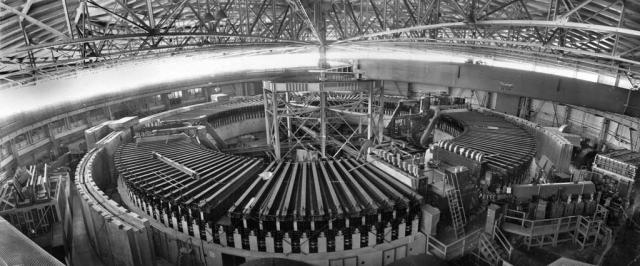The Bevatron starts up at Berkeley, California

The Bevatron in 1958 (Image: Lawrence Berkeley National Laboratory)
In 1954, Ernest Lawrence oversaw the building of a proton accelerator called the Bevatron at the radiation laboratory in Berkeley, California. The machine's name comes from BeV, the symbol used at the time for "billion electronvolt", or 109 electronvolts. We now call this unit the gigaelectronvolt, symbol GeV – BeV is no longer used. The Bevatron was designed to collide protons at 6.2 GeV, the expected optimum energy for creating antiprotons.
The following is from Experiences with the Bevatron by then Berkeley physicist Edward Lofgren, who was present for the start-up of the machine:
Finally, on April 1, 1954, a feeble pulse was obtained at a magnetic field corresponding to 6 BeV. The intensity was measured by counting the tracks in nuclear emulsion that had been inserted into the beam. The intensity was in the range of 104 to 106 protons per pulse.
A team of physicists headed by Italian-American physicist Emilio Segrè designed and built a detector specialized to look for antiprotons. The Bevatron was up and running.